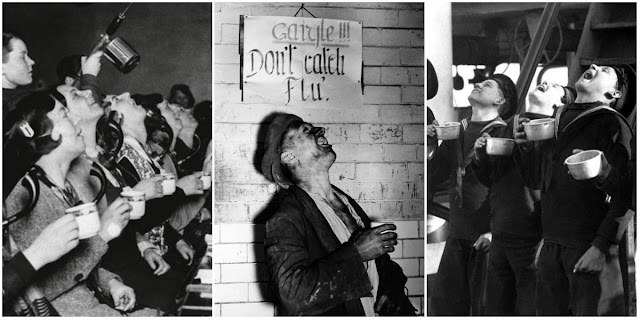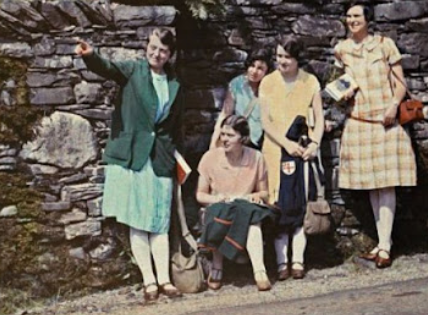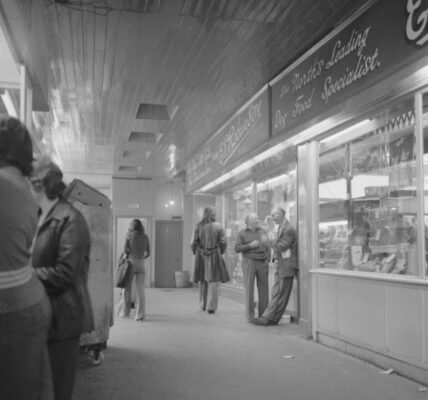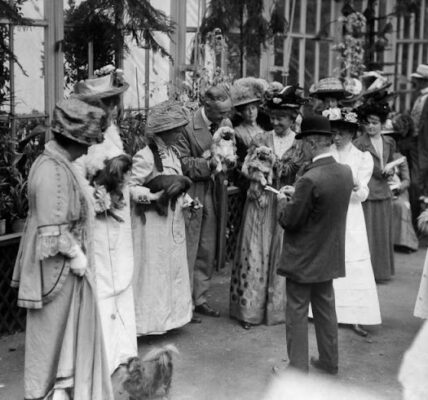The flu arrived as a great war raged in Europe, a conflict that would leave about 20 million people dead over four years.
In 1918, the flu would kill more than twice that number – and perhaps five times as many – in just 15 months. Though mostly forgotten, it has been called “the greatest medical holocaust in history.”

Experts believe between 50 and 100 million people were killed. More than two-thirds of them died in a single 10-week period in the autumn of 1918.
Never have so many died so swiftly from a single disease. In the United States alone, it killed about 675,000 in about a year – the same number who have died of AIDS in nearly 40 years.
As the country muddles through a particularly nasty flu season – one that the Centers for Disease Control says has killed 24 children in the first three weeks of January and 37 since the start of the flu season – the 1918 nightmare serves a reminder. If a virulent enough strain were to emerge again, a century of modern medicine might not save millions from dying.
As protection against the influenza virus, here are 20 vintage pictures of people are seen gargling with salt and water after a day spent working.
 |
| Practicing gargling at the spa resort of the Allier, Vichy, France, ca. 1915. |
 |
| As protection against the influenza virus, men are seen gargling with salt and water after a day spent working in the War Garden at Camp Dix, New Jersey, September 1918. This was a preventative measure against the influenza epidemic that had spread to army camps. |
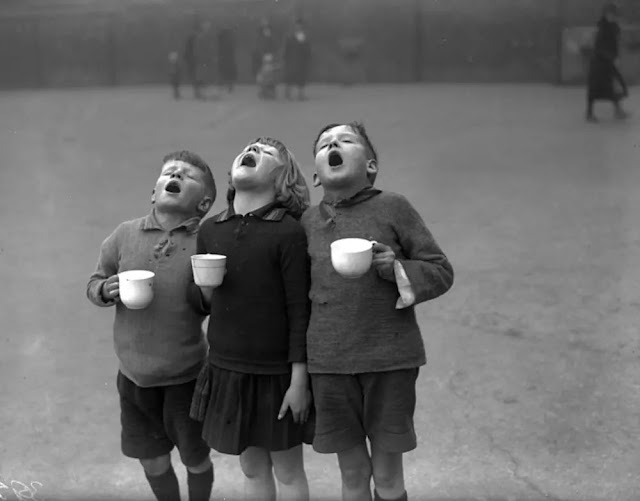 |
| Children at Sneed Road school gargling as a defense against influenza, 1931. |
 |
| Staff at the Mutual Property Insurance Co., in London, gargling under the supervision of a trained nurse, teaching the staff to safeguard themselves from influenza, 1932. Hygienic paper cups are used and tablets are also provided. |
 |
| Sailors from the training ship ‘Warspite’ gargling to prevent flu, 1933. |
 |
| Female telephone operators gargling with disinfectant in London, England, 1933. Protective action of the public authorities to defend influenza. |
 |
| Two young cadets at the Royal Nautical School, Portishead, Somerset, gargling as a preventative measure against an influenza epidemic, 1934. |
 |
| A group of children gargle at school to help the prevention of influenza, 1935. |
 |
| Little schoolchildren gargling their throats as a precaution against the influenza epidemic in England, 1935. |
 |
| Soldiers of the Welsh regiment stationed at Cardiff Barracks having a morning gargle as a preventive measure against flu, 1937. This has proved very successful as there have only been three reported cases. |
 |
| Soldiers in the Welsh Guards gargle each morning as a precaution against the flu, 1937. |
 |
| Officers and men of the Welsh Regiment carrying out a daily gargle at Cardiff Barracks as a precaution against influenza, 1937. |
 |
| Hygiene measures Collective gargling by nurses to prevent colds, 1937. |
 |
| Soldiers in the Welsh Guards are required to gargle each morning as a precaution against the flu, 1937. |
 |
| A miner at the Houghton Main Colliery, Yorkshire, has an anti-flu gargle after work, in front of a notice that advises him to do so, to avoid the serious epidemic that has effected miners at many neighboring collieries, 1937. |
 |
| A crowd of sailor cadets aboard the HMS Arethusa enjoy their daily gargle, taken as a preventative measure against flu. Upnor, England, 1938. |
 |
| Children of Danygraig nursery school, Swansea, gargling as a precaution against flu in winter weather, 1938. |
 |
| A line of soldiers from the York and Lancaster Regiment, seen here gargling on the parade ground in an attempt to ward off the flu, 1939. |
 |
| Nurses gargling to prevent flu at the Booth Hall Hospital, Manchester, while another gets a throat spray, 1939. A wave of influenza has followed the sudden changes in the weather. Doctors and public authorities in Manchester are working overtime preparing protective measures. |
 |
| New recruits seen here gargling with mouth washing, October 1939 |
